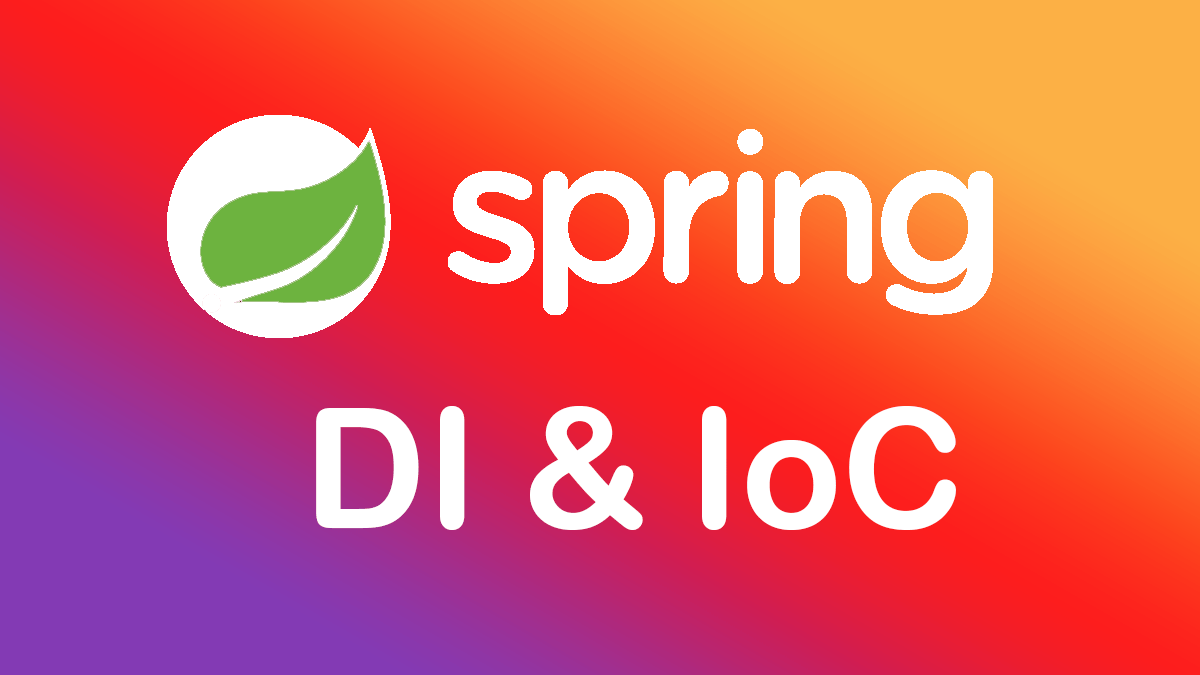Nội dung bài viết
Giới thiệu nội dung bài viết Chào bạn, trong bài viết hôm nay chúng ta sẽ tổng hợp các Annotation trong Spring Core.
1. @Autowire Annotation Sử dụng để nhúng các Bean vào Bean cần dùng. Có thể nhúng qua Constructor, Setter và Biến.
1
2
3
4
5
6
7
8
9
@RestController
public class CustomerController {
private CustomerService customerService ;
@Autowired
public CustomerController ( CustomerService customerService ) {
this . customerService = customerService ;
}
}
1
2
3
4
5
6
7
8
9
10
11
12
import org.springframework.beans.factory.annotation.Autowired ;
import org.springframework.web.bind.annotation.RestController ;
@RestController
public class CustomerController {
private CustomerService customerService ;
@Autowired
public void setCustomerService ( CustomerService customerService ) {
this . customerService = customerService ;
}
}
1
2
3
4
5
@RestController
public class CustomerController {
@Autowired
private CustomerService customerService ;
}
2. @Bean Annotation
Sử dụng để tạo các Bean trong ứng dụng Spring.
1
2
3
4
5
6
7
8
9
10
11
12
13
@Configuration
public class Application {
@Bean
public CustomerService customerService () {
return new CustomerService ();
}
@Bean
public OrderService orderService () {
return new OrderService ();
}
}
3. @Qualifier Annotation
Khi có nhiều Bean có cùng kiểu dữ liệu thì @Qualifier giúp chúng ta xác định nó là kiểu gì. Ví dụ như ta có 2 loại gửi tin nhắn là Email và SMS cùng implements 1 interface là Message Service. Chúng ta sử dụng @Qualifier để xác định đó là loại Email hay SMS vì chúng cùng 1 kiểu Message Service.
1
2
3
public interface MessageService {
public void sendMsg ( String message );
}
1
2
3
4
5
6
public class EmailService implements MessageService {
public void sendMsg ( String message ) {
System . out . println ( message );
}
}
1
2
3
4
5
6
public class SMSService implements MessageService {
public void sendMsg ( String message ) {
System . out . println ( message );
}
}
1
2
3
4
5
6
7
8
9
10
11
12
13
14
15
16
17
18
19
20
21
22
23
24
25
public interface MessageProcessor {
public void processMsg ( String message );
}
public class MessageProcessorImpl implements MessageProcessor {
private MessageService messageService ;
// setter based DI
@Autowired
@Qualifier ( "emailService" )
public void setMessageService ( MessageService messageService ) {
this . messageService = messageService ;
}
// constructor based DI
@Autowired
public MessageProcessorImpl ( @Qualifier ( "emailService" ) MessageService messageService ) {
this . messageService = messageService ;
}
public void processMsg ( String message ) {
messageService . sendMsg ( message );
}
}
4. @Require Annotation Sử dụng @Require thường dùng ở phương thức Setter nhằm bắt buộc phải nhúng giá trị vào.
1
2
3
4
@Required
void setColor ( String color ) {
this . color = color ;
}
5. @Value Annotation Được sử dụng để lấy giá trị từ file properties.
1
2
3
@Value ( "${APP_NAME_NOT_FOUND}" )
private String defaultAppName ;
6. @Lazy Annotation Sử dụng @Lazy để ngăn Spring IoC tạo Bean, chỉ tạo khi mình cần.
1
2
3
4
5
6
7
8
9
10
11
12
13
14
@Configuration
public class AppConfig {
@Lazy ( value = true )
@Bean
public FirstBean firstBean () {
return new FirstBean ();
}
@Bean
public SecondBean secondBean () {
return new SecondBean ();
}
}
7. @Primary Annotation Khi nhiều Bean có cùng một kiểu (type). Chúng ta có quyền ưu tiên cho Bean nào được load lên đầu tiên.
1
2
3
4
5
6
7
8
9
10
11
12
13
14
15
16
17
18
19
@Component
@Primary
class Car implements Vehicle {}
@Component
class Bike implements Vehicle {}
@Component
class Driver {
@Autowired
Vehicle vehicle ;
}
@Component
class Biker {
@Autowired
@Qualifier ( "bike" )
Vehicle vehicle ;
}
8. @Scope Annotation Dùng để nói lên phạm vi tồn tại của một Bean.
1
2
3
4
5
6
7
8
9
@Component
@Scope ( value = ConfigurableBeanFactory . SCOPE_SINGLETON )
public class TwitterMessageService implements MessageService {
}
@Component
@Scope ( value = ConfigurableBeanFactory . SCOPE_PROTOTYPE )
public class TwitterMessageService implements MessageService {
}
9. @Import Annotation Dùng để nhúng 1 hoặc nhiều file configure lại với nhau.
1
2
3
4
5
6
7
8
9
10
11
12
13
14
15
16
17
18
@Configuration
public class ConfigA {
@Bean
public A a () {
return new A ();
}
}
@Configuration
@Import ( ConfigA . class )
public class ConfigB {
@Bean
public B b () {
return new B ();
}
}
10. PropertySource Dùng để nạp các file properties từ bên ngoài vào Bean.
1
2
3
4
5
6
7
8
9
10
11
12
13
14
15
16
17
18
19
20
21
@Configuration
@PropertySource ( "classpath:config.properties" )
public class ProperySourceDemo implements InitializingBean {
@Autowired
Environment env ;
@Override
public void afterPropertiesSet () throws Exception {
setDatabaseConfig ();
}
private void setDatabaseConfig () {
DataSourceConfig config = new DataSourceConfig ();
config . setDriver ( env . getProperty ( "jdbc.driver" ));
config . setUrl ( env . getProperty ( "jdbc.url" ));
config . setUsername ( env . getProperty ( "jdbc.username" ));
config . setPassword ( env . getProperty ( "jdbc.password" ));
System . out . println ( config . toString ());
}
}
Mọi người hãy Subscribe kênh youtube dưới đây nhé để cập nhật các video mới nhất về kỹ thuật và kỹ năng mềm
Các khoá học lập trình MIỄN PHÍ tại đây




